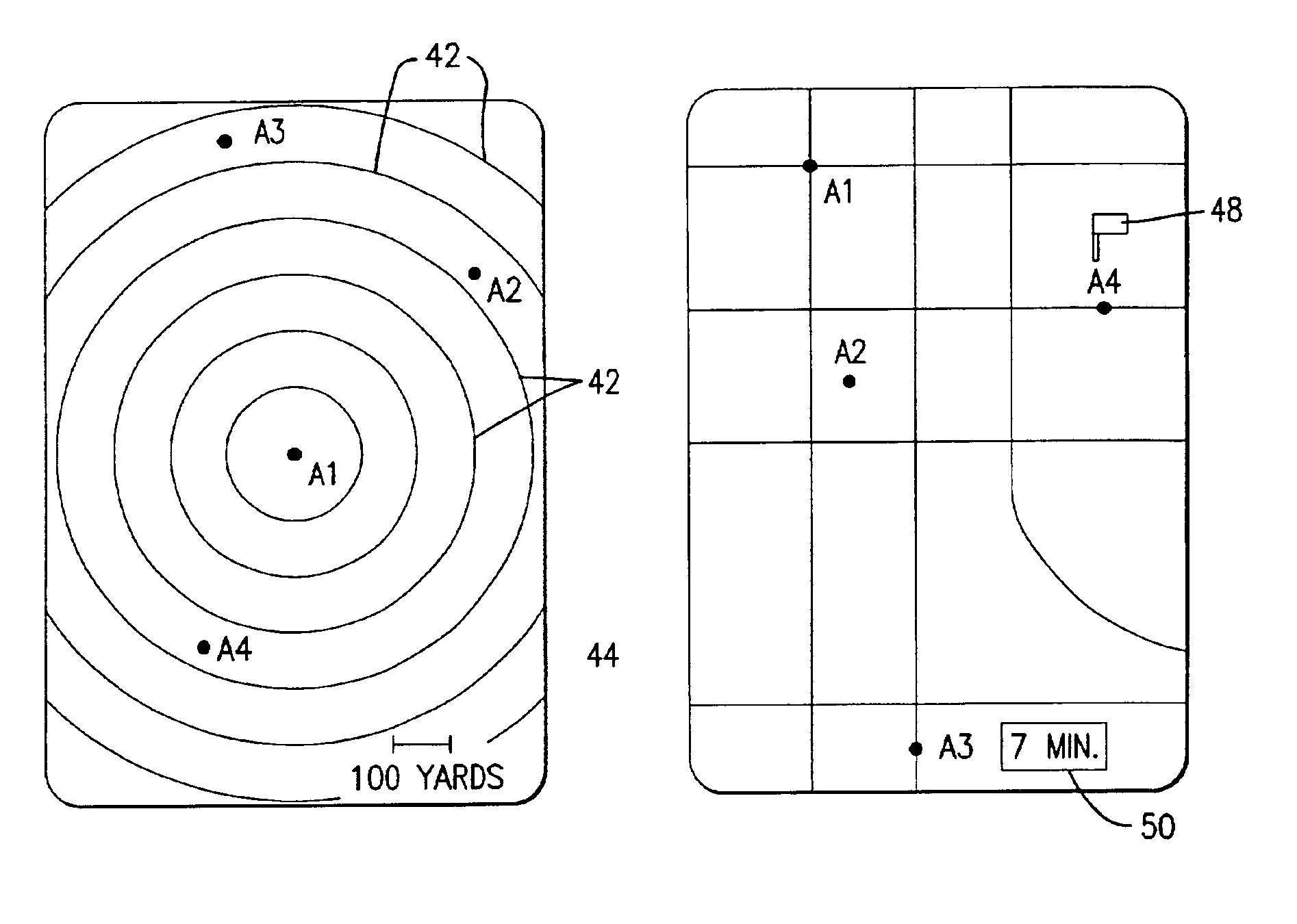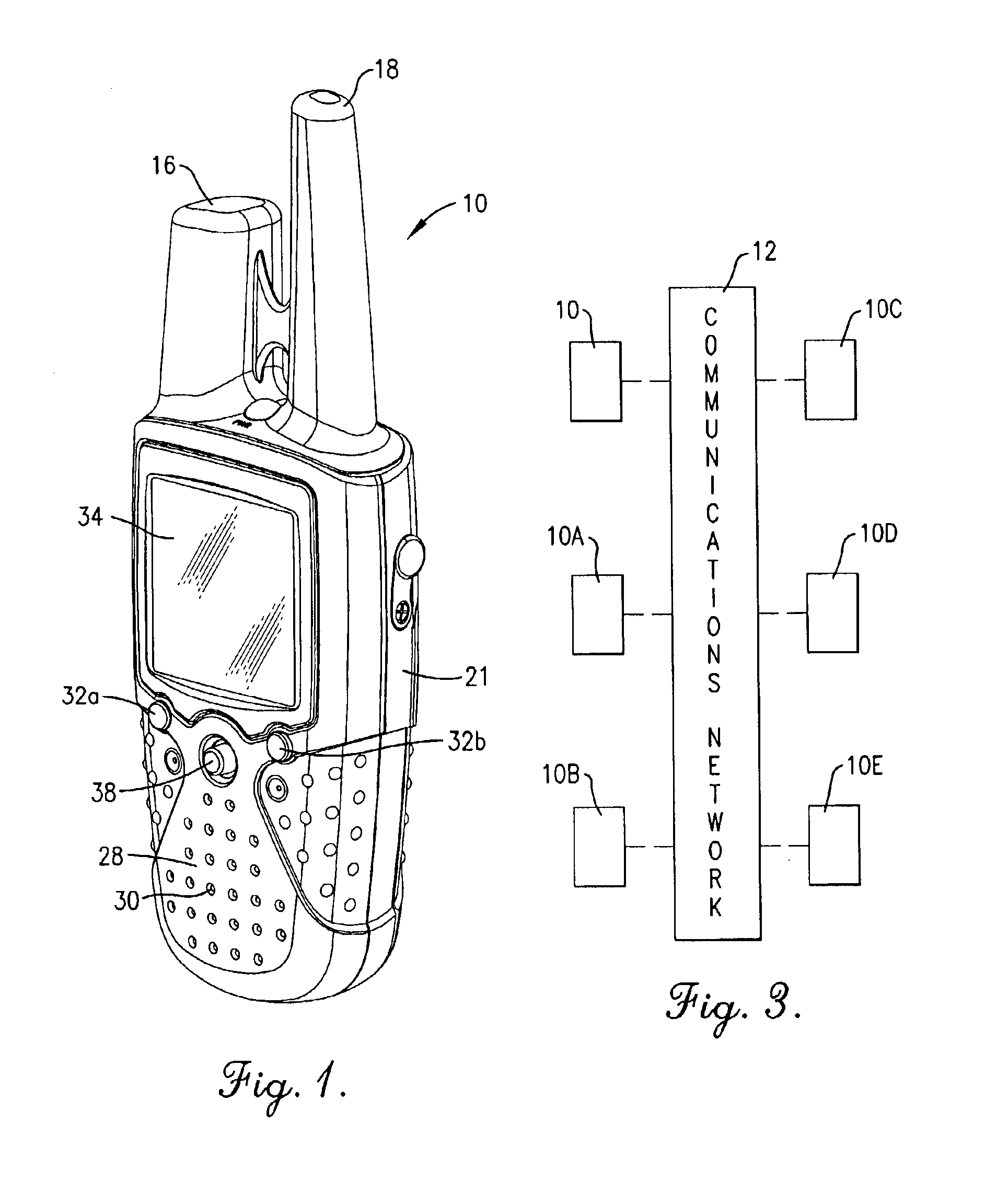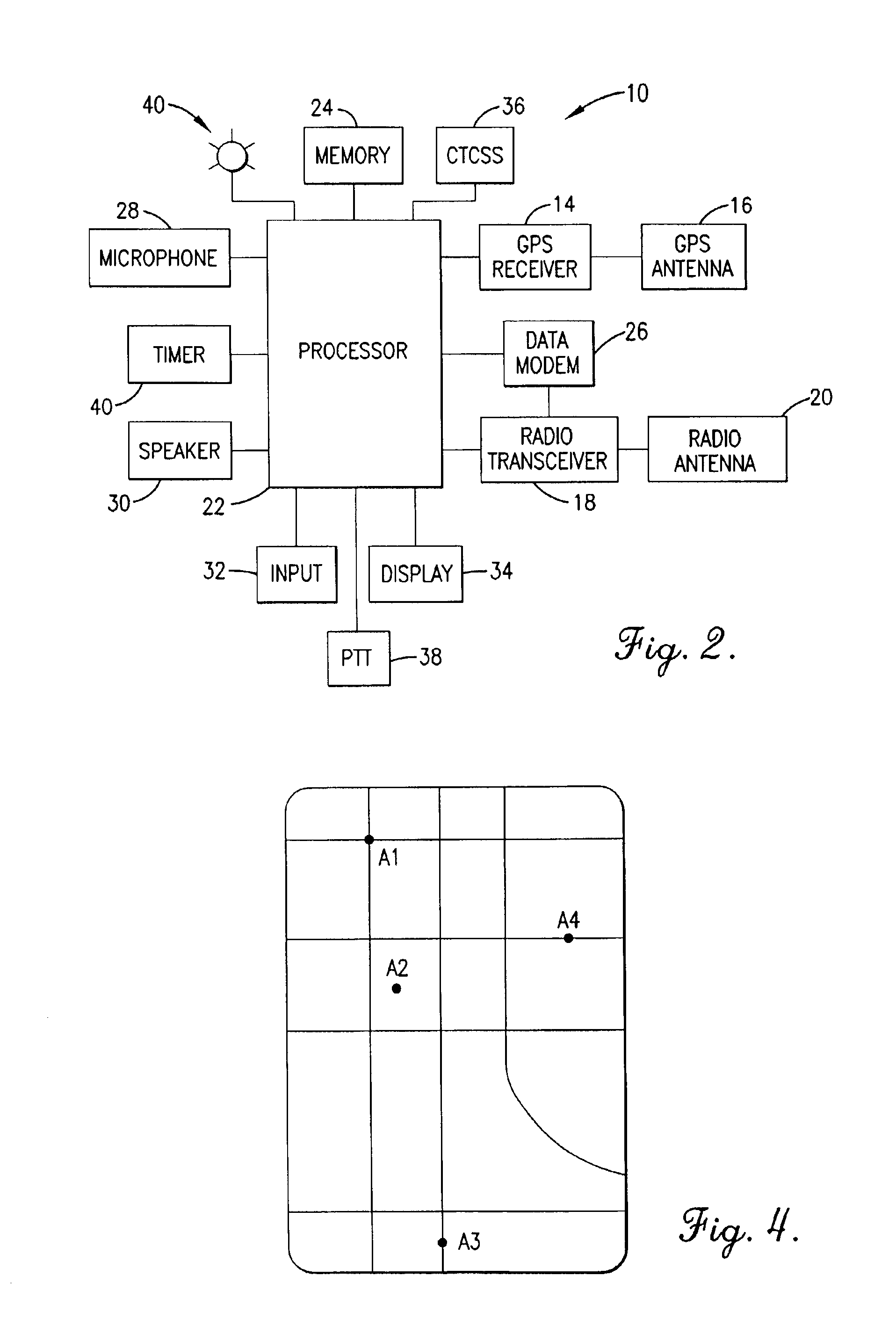Combined global positioning system receiver and radio with enhanced display features
a global positioning system and receiver technology, applied in the field of combined gps receivers and radio units, can solve the problems of limiting the utility of combined gps/radio units, unable to determine the distance of users from other radio users in their group or family, and unable to accurately assess the distance between users and other users, so as to quickly determine the distance between units.
- Summary
- Abstract
- Description
- Claims
- Application Information
AI Technical Summary
Benefits of technology
Problems solved by technology
Method used
Image
Examples
Embodiment Construction
Turning now to the drawing figures, and particularly FIGS. 1-3, a portable radio unit 10 constructed in accordance with a preferred embodiment of the invention is illustrated. The radio 10 is preferably a combined GPS / radio unit that may transmit and receive voice communications, determine its location using the GPS, and transmit location data and other information to other such units 10A, 10B, 10C, 10D and 10E over a wireless network 12. In the preferred embodiment of the present invention, units 10 and 10A-10E communicate with one another over a public radio network such as the Family Radio Service (FRS); however, the network 12 may also be a cellular radio network, a personal communications service (PCS) network, or any other conventional wireless communications network. While six units 10 and 10A-10E are shown on the exemplary embodiment of FIG. 3, only two such units are necessary for the purposes of the present invention.
Referring to FIGS. 1 and 2, the preferred unit 10 compri...
PUM
 Login to View More
Login to View More Abstract
Description
Claims
Application Information
 Login to View More
Login to View More - R&D
- Intellectual Property
- Life Sciences
- Materials
- Tech Scout
- Unparalleled Data Quality
- Higher Quality Content
- 60% Fewer Hallucinations
Browse by: Latest US Patents, China's latest patents, Technical Efficacy Thesaurus, Application Domain, Technology Topic, Popular Technical Reports.
© 2025 PatSnap. All rights reserved.Legal|Privacy policy|Modern Slavery Act Transparency Statement|Sitemap|About US| Contact US: help@patsnap.com



